-
History & Society
- Education in Pre-war Hong Kong
- History of Taikoo Sugar Refinery
- Hong Kong Products Exhibition
- Local Festivals Around the Year
- Post-war Industries
- Pre-war Industry
- The Hong Kong Jockey Club Archives
- Tin Hau Festival
- Memories We Share: Hong Kong in the 1960s and 1970s
- History in Miniature: The 150th Anniversary of Stamp Issuance in Hong Kong
- A Partnership with the People: KAAA and Post-war Agricultural Hong Kong
- The Oral Legacies (I) - Intangible Cultural Heritage of Hong Kong
- Hong Kong Currency
- Hong Kong, Benevolent City: Tung Wah and the Growth of Chinese Communities
- The Oral Legacies Series II: the Representative List of the Intangible Cultural Heritage of Hong Kong
- Braving the Storm: Hong Kong under Japanese Occupation
- A Century of Fashion: Hong Kong Cheongsam Story
Geography & EnvironmentArt & Culture- Calendar Posters of Kwan Wai-nung
- Festival of Hong Kong
- Ho Sau: Poetic Photography of Daily Life
- Hong Kong Cemetery
- Sketches by Kong Kai-ming
- The Culture of Bamboo Scaffolding
- The Legend of Silk and Wood: A Hong Kong Qin Story
- Journeys of Leung Ping Kwan
- From Soya Bean Milk To Pu'er Tea
- Applauding Hong Kong Pop Legend: Roman Tam
- 他 FASHION 傳奇 EDDIE LAU 她 IMAGE 百變 劉培基
- A Eulogy of Hong Kong Landscape in Painting: The Art of Huang Bore
- Imprint of the Heart: Artistic Journey of Huang Xinbo
- Porcelain and Painting
- A Voice for the Ages, a Master of his Art – A Tribute to Lam Kar Sing
- Memories of Renowned Lyricist: Richard Lam Chun Keung's Manuscripts
- Seal Carving in Lingnan
- Literary Giant - Jin Yong and Louis Cha
Communication & Media- Hong Kong Historical Postcards
- Shaw Brothers’ Movies
- Transcending Space and Time – Early Cinematic Experience of Hong Kong
- Remembrance of the Avant-Garde: Archival Camera Collection
- Down Memory Lane: Movie Theatres of the Olden Days
- 90 Years of Public Service Broadcasting in Hong Kong
- Multifarious Arrays of Weaponry in Hong Kong Cinema
-
History & SocietyGeography & EnvironmentArt & Culture
-
View Oral History RecordsFeatured StoriesAbout Hong Kong Voices
-
Hong Kong Memory
- Collection
- All Items
- Oral History
Recently VisitedOral History
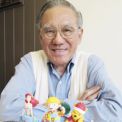
- The founding of Winsome Plastic Works
After joining Yuen Hing Hong, Lam Leung recommended his boss, Mr. Yeung, to set up a plastic factory. In those days, people from Mainland China would come to Hong Kong to purchase plastic sheets, which they made into set squares. Lam was inspired by this trend and suggested his boss to open a factory to make photo frames, as they were simple and easy to manufacture. The manufacturing procedures are as follows:
1) Crop the plastic sheets using a manual circular saw2) Deburr the sheets using manual polisher3) Glue the sheets and the photo stands together using chloroform 4) Put corrugated fiberboards at the back of the stands.
The whole procedures did not require any machinery. By selling plastic sheets, Yuen Hing Hong could only get a 7% to 10% profit margin, so they ran their own photo frame factory to improve profitability. Lam helped his boss coordinated the opening of the factory, naming it Winsome Plastic Works. The factory was located in rented space on the ground floor of an old building on 93 Hennessey Road. Lam himself moved into the penthouse of the shop as his residence.
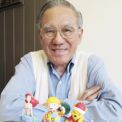
- The founding of Forward Products. Co.
In 1952, Lam Leung accepted Mr. Yeung’s offer and returned to Winsome Plastic Works. Lam’s friends disagreed with this move, thinking that Winsome was poorly managed at that time. Lam therefore decided to start up another business. In 1955, he opened Forward Products. Co., which manufactured western toy dolls on 8 Sai On Lane, Sai Ying Pun.
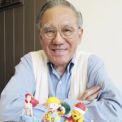
- Early toy products of Winsome Plastic Works and Forward Products. Co.
Between 1963 and 1965, Forward Winsome Industries Limited received large number of orders, and Lam Leung had to outsource the sewing process of doll clothes to others. Lam and his wife had to bring the clothing materials to sub-contractors in Sham Shui Po, Sun Po Kong and other resettlement areas, for the distribution to local families whereas the women would sew the clothes. After a few days, Lam would go to these neighborhoods to collect the clothes and pay them. At that time, the outsourcing would go as far as to Ap Lei Chau, Sheung Shui and Fanling. Yet, the company's toys were still produced mostly in-house. In 1969, Lam opened a factory in Taiwan. Some of the orders received in Hong Kong were then processed in Taiwan. In 1989, in view of the uncertainty faced with China's MFN status with the US, Lam brought capital to Thailand and opened a factory there.
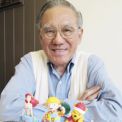
- The founding of Forward Winsome Industries Ltd and shares distribution
After Lam Leung left Advance Plastics and returned to Wing Sun Plastics, he was disillusioned with the job prospect. Eager to excel himself, he started Fuk Wo Products and B Alice Doll Fashions Limited. The owner of Wing Sun Plastics, Mr Yeung, did not object to Lam's adventures, so Lam was able to take orders for the three companies. In 1960, Yeung suggested to merge the three companies. Lam agreed to the merger of Fuk Wo and Wing Sun, but left Alice Doll Fashions Limited independent. Forward Winsome Industries was established after the merger, with Yeung and Lam each held half of the new company, with an initial capital of HK$250,000 each. Unfortunately Winsom soon faced problems with unfair distribution of dividends and clients' discontents with the merger. Lam had no choice but to raise capital to buy out Yeung's shares of the company.
Initially Lam did not have the necessary funds for the buy out. A friend of his learned about it, and encouraged Lam to purchase the shares with a cheque of HK$250,000. The money was given with three conditions: no receipt, no interest and no repayment schedule. This friend earned his fortune with business leads from Lam, thus he was repaying the favor. Lam was not sure whether to accept the cheque or not. One of Lam's clients in New York heard about this, and suggested to place orders with deposit so Lam could get credit from banks. Three other merchants at this time also agreed to do the same. With these business supports, Lam took to HSBC and the bank agreed to Lam's purchase of shares. Lam finally agreed to accept his friend's cheque and bought out Yeung's holdings of the company, with a small amount of cash as running capital.
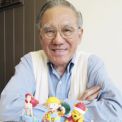
- Early development of factory site of Fowind
At the beginning the factory of Fowind was located at Pan Hoi Street, Quarry Bay. The company rented some space in a warehouse building owned by Wu Man Hon. In 1963 or 1964, the factory was demolished and resettled to Hop Shi Factory Building in Chai Wan. Lam Leung borrowed money to buy a premise of one and a half floor. Total area was 30,000 sq feet. In 1969, he bought a lot of 5500 sq feet in Ning Foo Street and developed it into Eltee Building in 1975. It became the new plant of Fowind.
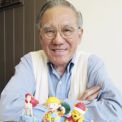
- The Early Outsourcing Commissioned by Fowind
Between 1963 and 1965, Forward Winsome Industries Ltd received a large volume of orders. Lam thereby outsourced the sewing procedures of doll costumes. Every evening, he and his wife would take the textile to the resettlement areas such as Sham Shui Po and San Po Kong. A contractor would re-distribute the textile to the women living in the area to do home-based processing. Lam would return in a few days to collect the finished costumes and give out wages. The textile could be sent as far as to Ap Lei Chau, Sheung Shui and Fanling. The toy products of Fowind were seldom outsourced to smaller factories, however. In 1969, Lam founded a toy factory in Taiwan, which took over some of Fowind’s orders. In 1989, as it was uncertain whether the USA would sustain China’s Most Favoured Nation status, Lam invested in setting up another factory in Thailand.
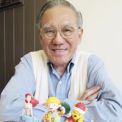
- The beginning of OEMbusiness in the 1970s
Forward Winsome Industries Ltd’s earliest OEM client was British toy maker, Palitoy. Fowind helped Palitoy manufactured “Action Man” figures (known as “G I Joe” in the USA). Palitoy was later bought by American toy company Hasbro, which became Fowind’s new client. Hasbro often made large orders and delegated different procedures to different factories in Hong Kong. Fowind mainly supplied accessories and costumes for them. The assembling process of different partial products was carried out by larger factories. Under OEM arrangement, the client needed to pay for mould casting, which accounted for the highest portion of the manufacturing cost. In recent years, Fowind had handled products like “Star War”, “Spider Man”, and “Transformers”. The mould casting fees of “Transformers” could be up to tens of millions of dollars per year. Lam illustrated the OEM process with an example:
Hasbro designed “Transformers” toys based on the film of the same name. They would hand the drawings of the design toFowind for making “hand samples”. After Hasbro had revised and finalized the samples, Fowind would cast the moulds and begin production. If Fowind handed over the finished products in a satisfactory manner, Hasbro would renew the contract annually. The standards set by foreign companies were high. Apart from liaising with clients, retailers such as Wal-Mart would also come to the factory to check on product quality and to do site visit. Therefore, suppliers had to be vigilant about the hygiene and labour right conditions in the factory. They must not, for example, hire child labour. Lam would improve on the testing of raw materials, products and the packaging to ensure safety, following international standards set forth by the International Council of Toy Industries. Upon receiving a sizable order, Fowind, in its earlier days, would outsource the making of toy accessories to smaller factories. The American clients would go to these subcontracting factories to inspect and check the products.
In recent times, foreign companies requested that production should take place under one roof, therefore Fowind had stopped this outsourcing practices. Fowind hired university graduates to be engineers in their quality control department. From the 1980s, Hong Kong factories took OEM orders from famous toy brands around the world. Fowind’s clients include Hasbro, Hallmark, Sanrio, Sekiguchi, Play Mobile, Disney, McDonald’s, Lego, etc. Lam believed that toy materials, the perception of toys and the toy market itself were all ever-changing. Factories must introduce timely products that target different age groups and consumer groups. The second generation of Fowind’s founder had taken over the business, and the factory had moved on to producing products like stationery, souvenir gifts, sportswear and household goods. When the idea a new product is confirmed, they would research into the market as well as intellectual property issues for making and rolling it out. Lam believed that there was much difficulty in developing the Chinese market nowadays.
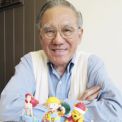
- The Transformation of Fowind’s Toy Products
Lam Leung believed that impetus for Hong Kong’s manufacturers to develop new products depended on their relationship with clients and their receptiveness of product diversity. If a client committed to long-term orders, the manufacturers would be more willing to invest in innovative product development. The toys of Fowind changed along with the changing market tastes. At the beginning, Lam focused on plastic daily goods, but he switched to doll costumes, and toy cars that were made of aluminium alloy. In 1972, they began to produce electronic toys. Fowind had diverse product lines. Lam believed human resource was imperative to product development. Fowind established a research department in 2000, hiring graduates of The Hong Kong Polytechnic University to do materials testing and introduce innovative ideas for product development. Overseas clients were mostly concerned about product safety. Giant retailers such as Wal-Mart would send representatives to the factory site and check the products, although they were not direct clients ofFowind. The International Council of Toy Industries was the international organisation governing the industry. It would blacklist manufacturers who had malpractices. Every country had its own safety standard over raw materials, regulating, for instance, the amount of lead content in paint. Fowind was aware of complying with each set of standard of different markets. For that, they needed employees who had knowledge of the safety standards of various importing countries.
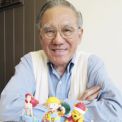
- What He Experienced at The Hong Kong Brands and Products Expo
Lam Leung’s factories, including Winsome Plastic Works, Advance Plastic Factory and Forward Products Co.. had participated in the Hong Kong Brands and Products Expo (HKBPE) for six to seven times during the times of Governor Alexander Grantham, Robert Black, and David Trench. Winsome was a producer of photo frames, lampshades and signs for the local Hong Kong market. They had a shop on 93 Hennessey Road. Winsome was the first of Lam’s factories to join the HKBPE. It was an opportunity to directly promote the factory to the public and businesses, and they were well received. Alice Doll and Forward, on the other hand, manufactured for the overseas markets. Lam explained that running a booth at HKBPE could boost company reputation and promote the company to foreign businesses in Hong Kong. At the same time, it was a good time to sell out a sizable volume of products. Forward used their female factory workers in the Miss Exhibition Pageant, and one of them had wun an award one year. Forward also advertised on Overseas Chinese Daily News. Lam stressed that the HKBPE was not only a chance for local sale, but also for marketing and connecting factories to exporters.
Lam introduced photos taken at the HKBPE: Governor Robert Black visiting Fowind’s booth, Winsome’s products in the 1950s, Group photo at Winsome’s booth, Group photo at Forward’s booth. Lam spent 20,000 to 30,000 dollars every year in designing and building his booth. Only a certain selection of products was sold in the exhibition. But that was enough for the company to break even. The HKBPE stipulated the size of each booth, so the participant factories all tried their best to design the booths in ways to attract visitors. Lam displayed different sorts of doll costumes and crystal balls at the booths. The dolls looked like Barbie, for a lot of Hong Kong factories copied foreign products in those days. It was not common for plastic factories to be present at HKBPE. One of the more outstanding exception was Red A. Toy factories did not take part actively either. Large factories with abundant capital, such as Red A, put up booths with eye-catching design, so did the major producers of vitreous enamel, torches and crystallised ginger. Lam’s booth was constructed by an interior design company. Usually, those companies would come to pitch their services after the factories registered for the HKBPE. The two parties would confer with each other to work out the booth design.
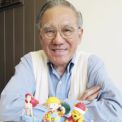
- The Process of Setting up a Factory in the Mainland China after 1979
In April 1979, Lam set up a factory in Dongguan, making it a testing ground for investment in the Mainland. This all began when Lam was invited by a Dongguan businessman with whom he had businesses ties. Dongguan was not a developed area and on the factory site there was just a dilapidated old house with fewer than 10 sets of machines. Lam had to go to the factory everyday to train up his staff about the work procedure and the skills they needed to know. He hired local mainland workers but Hong Kong managers. The mainlanders despised capitalism, and Lam had to repeatedly explain to the local officials that his intent was to teach the locals to work diligently for a living, so that they in turn could also help Lam himself. During the talk, he met the mayor of Dongguan, who sent his son to Lam’s factory to undertake a internship. Today, the son is able to set up a plastic processing plant himself.
The pilot factory in Dongguan was successful. In 1982, Lam set up another factory in Hainan. The reason he did not go back to Hainan right away when he made the first investment was that he did not want to embarrass himself in front of his folks over there in the light of possible failure, as it was a traditional Chinese notion to return home in glory after making a fortune. Lam thought that it was a must to introduce new technologies in order for China to develop itself in the early days of the country’s Economic Reform. In 1982, Lam established the Don Xiu Toy Factory in Yan Bu, Dong Xiu, Nanhai. Local officials were in charge of recruitment and they eventually hired 52 workers. Lam picked three people to be managers. The head of the factory was originally a veterinarian, but was later promoted to become the Communist Party’s local leader in Dong Xiu with a wage of RMB36. The other two managers were formerly a leader of coolies and a farmer respectively. Lam also hired his former classmate, Chan, to manage the factory on his behalf, focusing on finance and external affairs. The head of factory had a successful career and retired in 2007. Lam thought the weaknesses of Mainlanders was that they were not smart enough and was in favour of nepotism. Hence he did not delegate all of his authority to them and instead preferred to manage remotely from Hong Kong.
Copyright © 2012 Hong Kong Memory. All rights reserved.
| Set Name |





